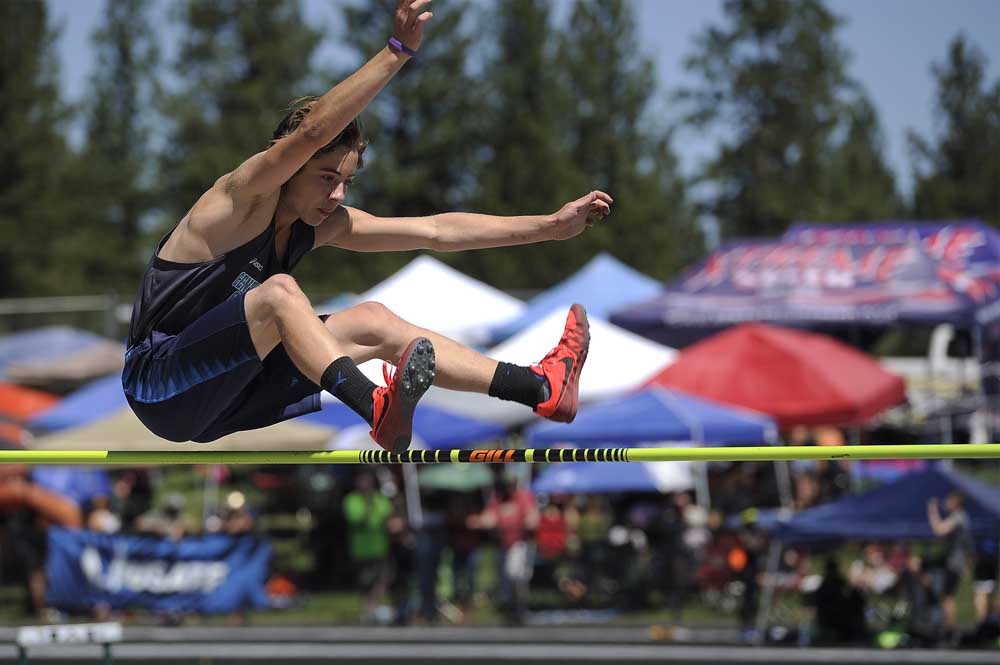USATF Junior Olympics regional championships is a huge meet for young track athletes
Published 12:00 am Monday, July 9, 2018

- Skye Knox (3) competes in the girls 9-10 division of the 1,500-meter run during the USATF Junior Olympic Region 13 Championships at Summit High School on Saturday.(Ryan Brennecke/Bulletin photos)
Kyle Kirsch knew he and his family would not be traveling to the Junior Olympic national championships in North Carolina later this month. But he was determined to qualify anyway.
Kirsch, an 11-year-old member of the Central Oregon Running Klub (CORK), was disappointed with his 13th-place finish in the long jump Saturday at the USA Track & Field Junior Olympic Region 13 Championships at Summit High School. He took sixth in the boys 11-12 1,500-meter run, shut out of the top five qualifying spots by less than a second. But he still felt confident going into the 3,000, the first event contested on the track Sunday morning.
Trending
“I wasn’t that worried,” Kirsch said. “I wanted to beat some of the runners who had beat me (at other meets). I normally go out in front and then I lose a couple places, but I had some extra energy.”
The top six runners, including Kirsch, stuck in a pack for much of the 71⁄2-lap race. Instead of fading on the last lap, Kirsch passed two runners and held on to finish third in 11 minutes, 13.77 seconds. He trailed winner Connor Rickey by 8 seconds.
Kirsch was one of more than two dozen Central Oregon athletes competing at the regional meet, which drew approximately 1,200 youth athletes from USATF’s Region 13, which includes Oregon, Alaska and the Pacific and Inland Northwest. Many of the local distance runners, like Kirsch, train with CORK, which also offers a youth cross-country program in the fall. Twenty-six Central Oregon Track Club members, most of them sprinters, jumper or throwers, qualified for the four-day regional meet based on their performance at the Oregon state championships at Jesuit High School in Portland last week.
“State was large, too, but this is an even bigger meet than state,” COTC coach Lisa Zimmerman said on Saturday, the busiest day of the meet, which started with multi-event contests on Thursday and Friday and concluded Sunday. “This is a step up. The athletes do get a little wide-eyed, I think, seeing all this, but I’m looking at the younger ones, and they have big smiles on their faces. They’re loving it.”
Zimmerman said there are always little fires for coaches to put out at meets of this size. (Just minutes earlier, an athlete had realized the spikes in her shoes were not allowed on the track, so Zimmerman raced back to the tent to unscrew the spikes and replace them with legal ones.)
“I have 16,000 steps right now,” Zimmerman joked, noting her watch that doubles as a pedometer. “Our coaching staff is really busy helping (run the meet), but we can still be out there and talk to our kids, which is nice.”
Trending
Teaghan Knox, a 14-year-old distance runner who took a break from competitive swimming to train with CORK this spring and summer, said she feels the pressure of big track meets like the regional championships in a way she did not at swim meets.
“I get a lot more nervous for running. I’m not sure why,” Knox said after finishing second in the 3,000 Sunday. “In swimming, I felt a lot more laid-back about it, maybe because I had been doing it for so long. In track I get quite nervous before my race. So I’m trying to work on that.”
Knox and her younger sisters Skye and Ainslie each finished in the top five in their age group in the 1,500 meters, and Skye Knox took second in the 9-10 800-meter run.
“The best part was watching my younger sister Skye — she ran the 1,500 yesterday, and she did really well,” Teaghan said. “It was really cool to watch her, watch my sisters.”
The competition was stiff in many events, but the Junior Olympic meets are also an opportunity for young athletes to try some of track’s more esoteric events. Take Neila Hopwood, 10, who competed in the 1,500-meter racewalk and became the first COTC athlete to ever qualify for nationals in the event, which was the first race held Saturday morning.
“The first time I went to Junior Olympics, I saw them doing it, and I thought, that sounds really fun, that’d be good for me,” said Hopwood, who said she has been training in the discipline for just over a month.
Hopwood said racewalking is easier than running, but not by much.
“You have to have your legs straight, and it was hard for me to focus,” she explained. “I think I could’ve gone a little bit faster. I was kind of tired, because I had to wake up really early.”
—Reporter: 541-383-0305, vjacobsen@bendbulletin.com








